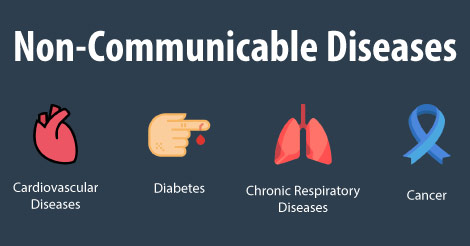Damak: Most of the deaths in Nepal (71 percent) are caused by non-communicable diseases, according to a study. The risk non-communicable diseases is lately increasing day by day, pointed out researchers, who conducted the study, at a PEN-Plus programme organised here in Damak, Jhapa, by a government hospital to reduce and manage risks of non-communicable diseases.
The Kathmandu Institute of Child Health (KIOCH) coordinated the programme. On the occasion, the KIOCH Chair Prof Dr Bhagawan Koirala presented data of deaths from non-communicable disease putting the number to deaths be 71 percent. Infectious disease has gone unchecked posing a greater risk to the country’s health sector, he said.
When the PEN-Plus programme runs effectively, the mortality rate from non-communicable disease could be significantly dropped in the next five to 10 years, he said. “Providing treatment after early diagnose of diseases can help prevent early death. Health insurance for the poor, and availability of early treatment and medicines can also help,” he said. On the occasion, Rector of the BP Koirala Institute of Health Sciences, Prof Dr Sanjeev Sharma, shared that untimely death of the people could be prevented if PEN-Plus programme is effectively implemented. He expressed commitment of make necessary arrangement for the health examine and treatment of the patients referred from Damak.
Similarly, Chief of PEN-Plus programme under the Department of Health Services, Phanindra Prasad Baral, mentioned that the programme has been launched as a pilot programme in Damak and Bardiya and it would be expanded to other places. Deputy-Mayor of Damak municipality, Regina Bhattarai, urged neighbouring local-level to take benefit as PEN-Plus programme has been launched at Damak hospital.
Discussion was held among mayor, deputy mayor of Damal municipality, chiefs and representatives of neighbouring local-level regarding test, treatment and medicine of non-communicable diseases—heart, diabetes, respiratory problem, cancer, heart attack and sickle cell anemia under the PEN-Plus programme.




COMMENTS